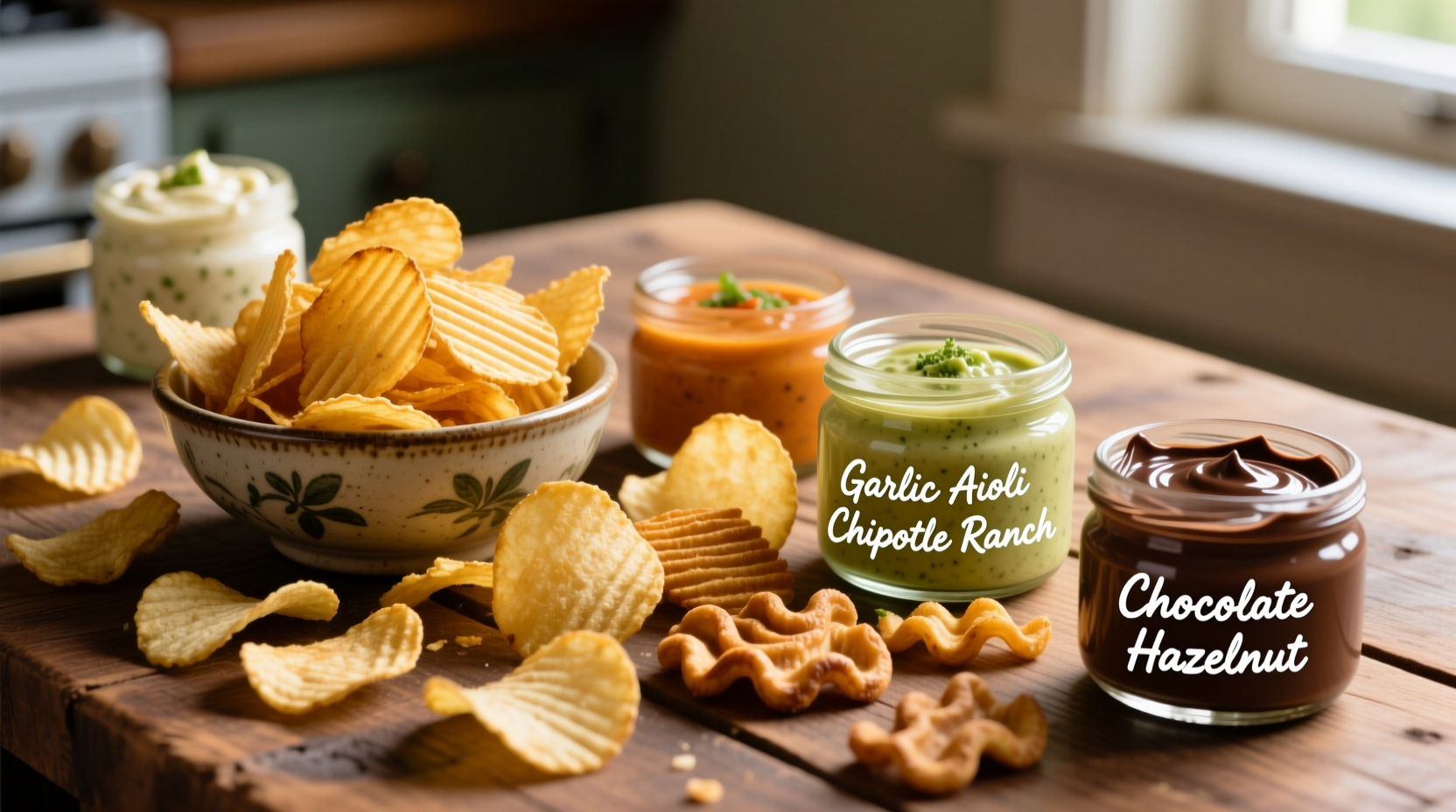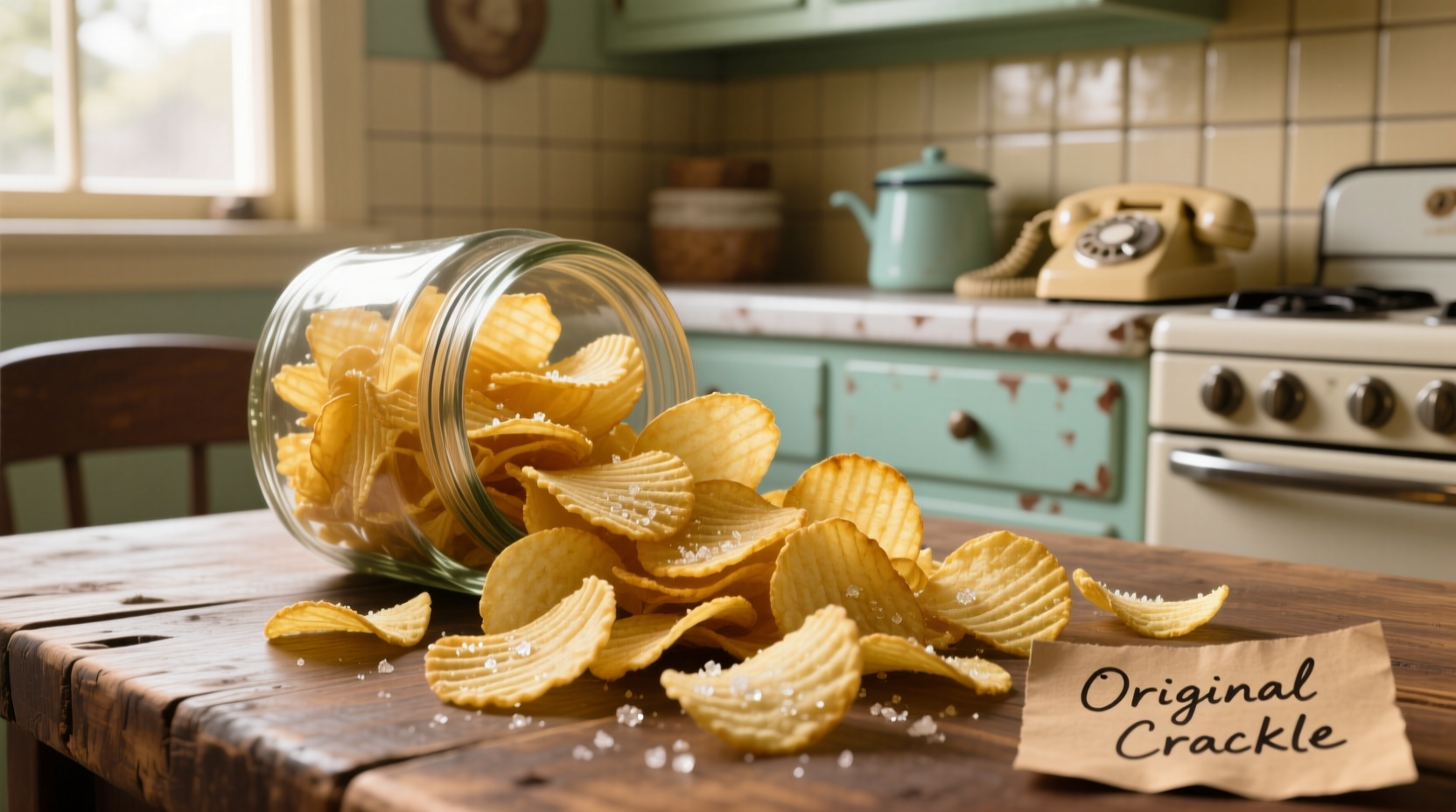From Accidental Creation to Global Snack Sensation
Ever wonder how that irresistible crunch became a pantry staple worldwide? The story of potato chips reveals surprising twists that transformed a kitchen mistake into one of history's most beloved snacks. Understanding what makes potato chips special goes beyond just flavor—it connects us to culinary innovation, cultural preferences, and even food science principles that impact how we enjoy them today.
How Potato Chips Became a Global Phenomenon: A Timeline
Tracing the evolution of potato chips shows how a simple concept evolved through technological and cultural shifts. This historical progression explains why certain styles dominate specific regions while others remain niche favorites.
Nutritional Profile Comparison: Understanding Your Options
Not all potato chips deliver the same nutritional value. This comparison helps you make informed choices based on your dietary preferences and health goals. The data comes from the USDA FoodData Central database, providing verified nutritional information for common varieties.
| Type of Potato Chip | Calories (per oz) | Fat (g) | Carbohydrates (g) | Sodium (mg) |
|---|---|---|---|---|
| Regular Potato Chips | 152 | 10 | 15 | 170 |
| Kettle Cooked | 157 | 10 | 15 | 185 |
| Baked Chips | 120 | 4.5 | 19 | 200 |
| Wavy Potato Chips | 155 | 10 | 15 | 165 |
| Homemade (unseasoned) | 140 | 7 | 18 | 0 |
Source: USDA FoodData Central
Choosing the Right Potato Chip for Every Occasion
Understanding context boundaries helps maximize enjoyment while minimizing disappointment. Certain chip varieties excel in specific situations while falling short in others. Consider these practical guidelines when selecting your next bag:
Perfect for Casual Gatherings
Regular or wavy potato chips work best for casual settings where ease of serving matters most. Their consistent texture and familiar flavor profile appeal to broad audiences. Pair with classic dips like ranch or French onion for maximum crowd appeal. These varieties maintain structural integrity when transported, making them ideal for potlucks and picnics.
Ideal for Gourmet Experiences
Kettle-cooked chips shine when you want to elevate a meal. Their thicker cut and uneven surface create satisfying crunch while holding up to robust dips like pimento cheese or artichoke dip. The artisanal appearance makes them suitable for dinner parties where presentation matters. Look for varieties made with heirloom potatoes for distinctive flavor notes.
Best for Health-Conscious Choices
When nutritional considerations take priority, baked chips or homemade versions offer advantages. Baked chips reduce fat content significantly while maintaining crunch. For complete control over ingredients, try making your own using a mandoline slicer and oven-baking technique. Remember that homemade versions lack preservatives, so consume within 2-3 days for best quality.
Mastering the Art of Potato Chip Pairings
Professional chefs understand that successful pairings consider texture, salt level, and flavor intensity. Follow these evidence-based recommendations to create perfect combinations:
Dip Compatibility Guide
The geometry of your chip dramatically affects dipping success. Wavy chips create natural troughs that hold chunkier dips like guacamole or salsa. Regular thin chips work best with smooth dips like spinach artichoke or cheese-based options. Kettle-cooked chips' irregular surface provides excellent adhesion for thicker dips but may break under excessive pressure.

Beverage Pairing Principles
Certain drinks enhance potato chip enjoyment through complementary flavor interactions. The saltiness of chips creates a natural pairing with carbonated beverages that cleanse the palate between bites. For a sophisticated experience, try these combinations:
- Classic Salted Chips: Pair with crisp lager or sparkling water with lemon
- Barbecue Flavored: Complement with sweet iced tea or amber ale
- Sour Cream & Onion: Match with light pilsner or cucumber-infused water
- Vinegar Flavored: Balance with dry cider or tart cherry juice
Preserving Freshness: The Science Behind Storage
Many people struggle with stale chips, not realizing that proper storage techniques can extend freshness significantly. The key lies in understanding moisture migration principles:
When exposed to air, potato chips absorb moisture from the environment, causing them to lose crispness. Commercial bags contain nitrogen to prevent oxidation, but once opened, that protection disappears. For optimal results:
- Transfer opened chips to an airtight container immediately
- Include a small silica packet (found in new shoe boxes) to absorb excess moisture
- Store in a cool, dark place away from temperature fluctuations
- Avoid refrigeration, which introduces additional moisture
Following these simple steps maintains crispness for 2-3 weeks after opening, compared to just 3-5 days with improper storage.
Creating Restaurant-Quality Homemade Potato Chips
While store-bought options offer convenience, making your own allows complete control over ingredients and texture. Professional kitchens use specific techniques that home cooks can easily replicate:
- Select high-starch potatoes like Russets for maximum crispness
- Use a mandoline slicer for consistent 1/16-inch thickness
- Soak slices in cold water for 30 minutes to remove excess starch
- Dry thoroughly with clean kitchen towels before frying
- Heat oil to precisely 350°F (175°C) for optimal frying
- Fry in small batches to maintain oil temperature
- Drain on wire racks, not paper towels, to prevent sogginess
- Season immediately after frying while chips are still warm
For oven-baked versions, toss potato slices with 1 teaspoon oil per potato, spread in single layer on parchment-lined baking sheets, and bake at 400°F (200°C) for 15-20 minutes, flipping halfway through.











 浙公网安备
33010002000092号
浙公网安备
33010002000092号 浙B2-20120091-4
浙B2-20120091-4